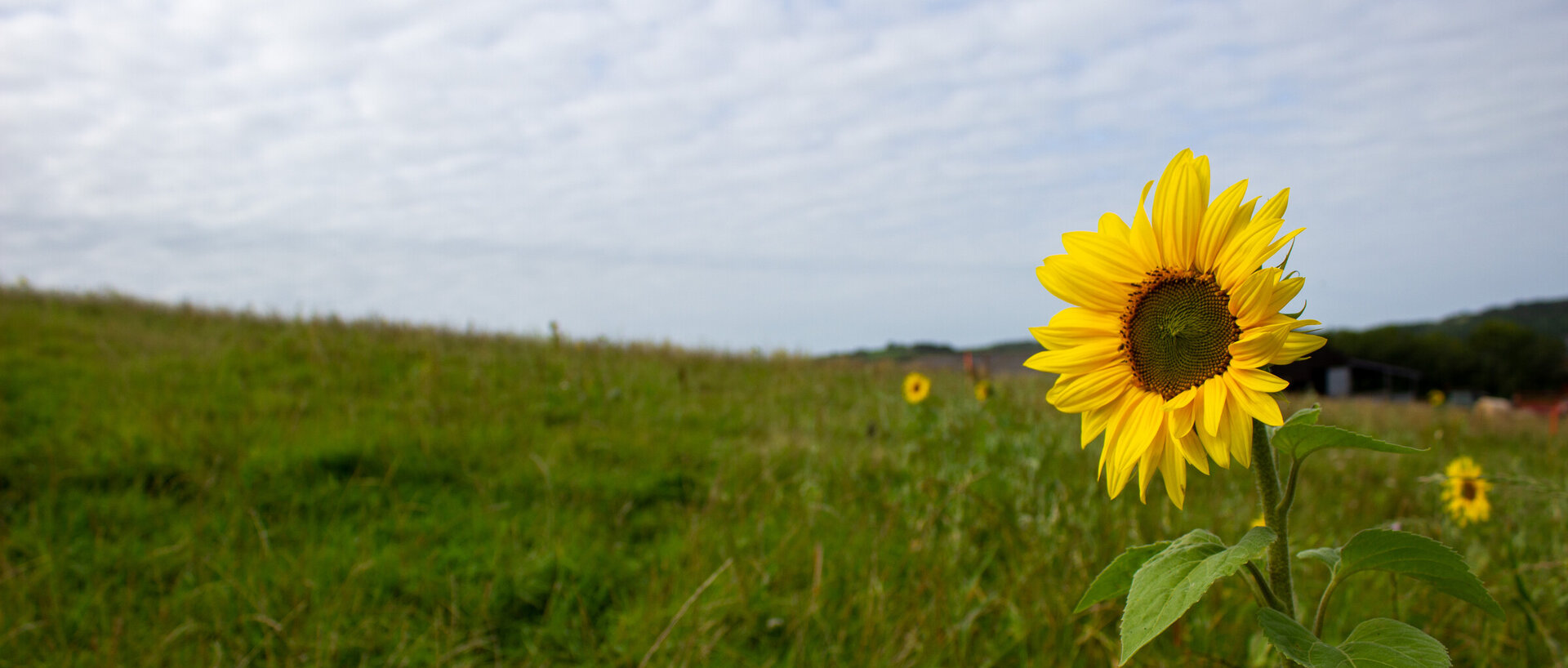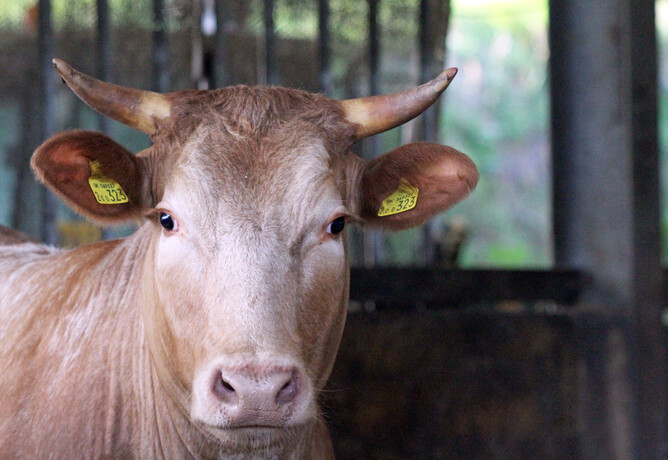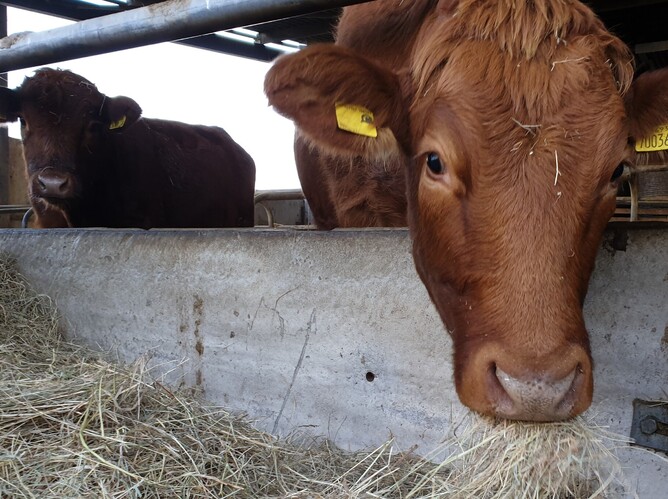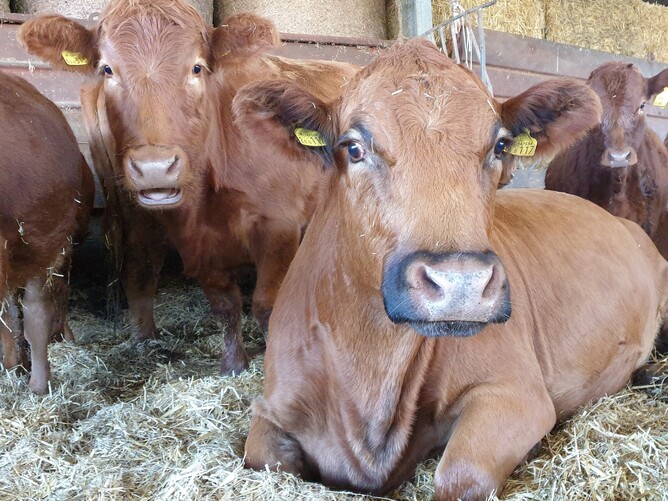Our cattle are a vital part of the regenerative farming methods we use here at Redwoods Farm. Whilst we try to keep them out on the pasture for as long as possible, part of the annual cycle currently includes bringing them in for a few months over winter. Read on to understand why.
From Ice Age to modern day
Millions of years ago, during the Ice Age, Redwoods Farm was a very different place. Glaciers carved their way through the landscape, sculpting the valleys and depositing rock and soil. The glacial deposits left behind created the patchy, variable soil types that we know today on Redwoods Farm, including large areas of clay.
Clay soils have a very low infiltration rate. This means with heavy rainfall the soil is quickly saturated and becomes waterlogged. Any heavy machinery or animals moving over the ground in these conditions compact the soil, further reducing its infiltration. The rain can’t soak into the soil so it runs off the land into rivers and streams, carrying valuable topsoil with it. This erosion leaches nutrients and minerals from the land so future crops struggle to grow strong and healthy.
Before we moved to Redwoods farm, large areas were used for intensive cereal production. This meant there were monocultures throughout the farm. With only one crop species in a field, there was very little benefit to the soil in the form of nutrients and carbon input. Not only this, heavy ploughing increased erosion rates and so organic matter levels were very low in much of the soil when Mark and Pauline took on the farm.
Slower winter growth rates
Slower growth rates in winter mean there is less plant coverage on the soil to protect it. The same cattle hooves which benefited the soil through trampling of pasture in summer, now become damaging as they expose bare patches of soil vulnerable to erosion. Waterlogged soils quickly turn to mud with cattle roaming above. This makes it very difficult for plant species to grow and the pasture will take a very long time to recover.
On top of this, there isn’t enough forage to sustain the cattle through the whole winter. During autumn, we often take hay out to the cows on the pasture. This is so they can stay outside, despite there not being enough forage in the field for them. However, in late autumn we move the cows inside to give the pasture time to recover through the winter and prevent overgrazing.
The importance of organic matter
Organic matter is essential for the health of the soil. It binds the particles together, provides nutrients for the soil microorganisms, reduces compaction and increases the water holding capacity of the soil. If the soil can hold more water, less runoff occurs and there is less erosion. It takes more rain for the soil to become saturated, so the cattle can remain outside for longer without damaging the soil through compaction.
The available nutrients from organic matter are not only beneficial to soil microbiology, they also help plants as they uptake their required nutrients through their roots, allowing them to grow faster and taller. Therefore, the pasture can recover more quickly throughout the year. This means there is more forage in the fields which provides more coverage to protect the soil, as well as feeding the cattle so they can remain outside for longer.
Overwintering inside
We bring our cattle inside for the wetter months when they would damage the soil. Here, in the large and spacious sheds, they are fed silage and hay and sleep in deep straw beds. The majority of the silage and hay fed is from our own pasture at Redwoods Farm, harvested in the summer when grass growth rates were much higher. We source any additional hay and silage required, as well as straw from wheat and barley harvests from other farms in the South West.
Our sheds are designed to maximise air flow through a chimney effect. The peak of the roof has a covered gap to allow air to escape, without letting rain in. The cattle need a constant supply of fresh air to minimise disease, predominantly pneumonia. Stale air increases the spread of the infection and so the number of vulnerable animals. We have the sides of the shed open as much as possible but close up those which face the worst of the winter weather. This means the bedding area stays warm and dry whilst the rest of the shed maintains good air circulation.
Reducing fossil fuels
Currently, damage to the soil far outweighs any benefits of keeping cattle outside during winter so we must bring them inside. However, we do work to reduce machinery use as much as possible. Our pigs love to dig through the dung in springtime when the cattle move back outside. This aerates the dung, encouraging microbes to break it down more quickly into compost. This means there is much less to spread onto the fields as the breakdown process is already complete.
We use as much hay and silage as possible from our own farm so our cattle’s food miles are minimised. We have now stopped feeding grains to our cattle, so feed processing is greatly reduced. Feeding a 100% pasture diet, we are promoting biodiversity due to larger diversity of plant species. This leads to increased carbon sequestration as more plants are photosynthesising in a field at any one time.
Extending the grazing season
We believe the cow should be directly on the pasture for as long as possible throughout the year. Taking pasture to the cow in the form of hay or silage requires machinery for both harvesting and transport, which uses fossil fuels. Not only this, the dung is spread onto the fields during the following year, requiring more fossil fuels. Our cattle also love to be outside; in spring they are always so excited to be outside again! This is why we aim to extend our grazing season for our cattle as we increase the organic matter through regenerative techniques and holistically planned grazing.
Find out more about our cattle and purchase our beef products.




